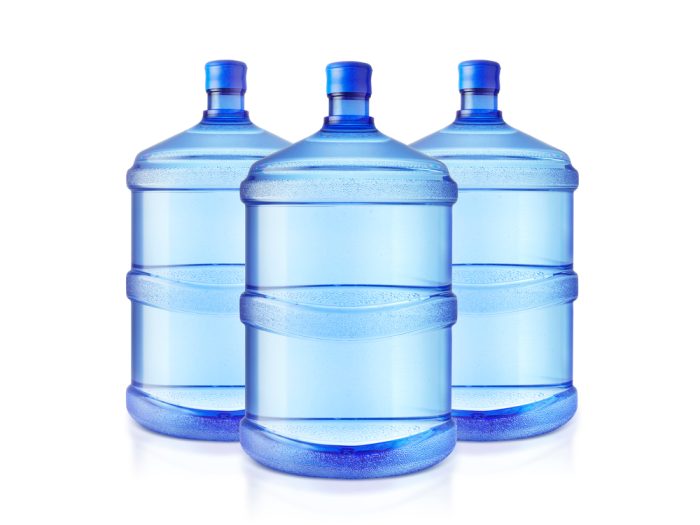
The answer to this question is far more complicated than one may expect. It’s been common in recent years to hear that one piece of aqua advice from everyone from medical professionals to random people online: the average person needs about a gallon of water per day to stay healthy. However, just how much water goes in a gallon? What is a gallon, in layman’s terms? And why might this advice not make sense to someone overseas? These might be good information to have when looking for an Atlanta water bottle delivery.
Gallons and Gallons
Before we can even begin to answer this question, we need to define what a gallon is. In both the United States customary units and the British imperial systems of measurement, a gallon is a unit of measurement for fluid, or sometimes gas, based on volume. However, the volume of material required to constitute a gallon changes based on the measurement system in use.
The United States Liquid Gallon
The United States gallon is probably the one you’re the most familiar with. Often simply referred to as a gallon, the US gallon is legally defined as 231 cubic inches, which is about 3.785 liters, and a US gallon of water weighs about eight pounds at 62°F. There are four US quarts in a US gallon, two pints in a US quart, and 16 US fluid ounces in a US pint.
Outside of the States, countries that use the US liquid gallon include Belize, Colombia, Dominican Republic, Ecuador, Guatemala, Haiti, Honduras, Liberia, Nicaragua, and Peru. There are also a few other territories and US associates that use the US gallon, those being the Marshall Islands, the Turks and Caicos Islands, the Bahamas, the Federated States of Micronesia, and Palau.
The US Dry Gallon
As a quick note, in some agricultural regions of the United States, a unit of measurement called a “dry gallon” may be used. This is rare to see in urban areas, and it has nothing to do with liquids, but it is technically still a gallon, so it deserves a mention. This dry measure is one-eighth of a Winchester bushel—the oldest unit of volumetric measurement—which is about 2150 cubic inches. This places the dry bushel at about 269 cubic inches, technically giving it more volume than its liquid counterpart.
It was historically used to measure grain and is still used to measure crops and other dry commodities in the more agricultural areas of the US to this day, despite not technically being an official measurement in the country.
The Imperial Gallon
The imperial gallon may have a similar namesake, but there is a difference between it and the US gallon. Namely, it’s actually heavier than its American counterpart by a fair amount. The imperial gallon is about ten pounds at 62°F, taking up about 277 cubic inches, and is about 4.546 liters. This can be broken down into around four imperial quarts, eight imperial pints, and 180 imperial fluid ounces.
Though it has been slowly phased out by many of the countries it was once used in, including the land of England that invented it, it’s still used in a few countries. These include Antigua and Barbuda, Dominica, Grenada, Saint Christopher and Nevis, Saint Lucia, and Saint Vincent and the Grenadines. It’s also still in use in a few British territories, namely Anguilla, the British Virgin Islands, the Cayman Islands, and Montserrat. The Turks and Caicos Islands and the Bahamas also use the imperial gallon alongside the US gallon, and even in countries that no longer use it, some companies still mark their gasoline, alcohol, bottled water, and other fluids in the imperial gallon.
World Usage of the Gallon
Something you may have noticed while reading those previous two paragraphs is that the number of countries currently using gallons of any definition is significantly smaller than the number of countries actually on the map. This is because the majority of the world’s notions have since shifted from all forms of gallon measurement to the liter. This is because the liter is a part of the metric system, making it more universal and less prone to calculation errors.
In fact, three whole continents use the liter as a primary form of volumetric measurement: Europe, Asia, and Australia. Also, every country in Africa besides Liberia also uses the liter instead of the gallon. Even our closest border neighbors, Canada and Mexico, have long converted to the liter. Therefore, it may cause some confusion, or at least some frustration, when you tell any foreign friends of yours to drink a gallon a day.
How Much Is a Bottle?
A bottle is not a standard unit of measurement, so the number of water bottles in a gallon is determined by the bottle’s size. A gallon contains 128 fluid ounces, and water bottles are usually measured in fluid ounces here in the United States. So, to find the answer to this saturated stumper, you need to divide 128 by the number of ounces in the water bottle. On average, a water bottle will measure around 16 fluid ounces. Dividing that by 128 gives us eight bottles of water in order to get your daily water intake. For many Americans, who are used to drinking anything but water, this may seem like an excessive number of bottles. Plus, since many water bottles are made out of plastic, this number may sound some alarm bells for the environmentally conscious who would want alternatives to plastic water bottles.
There are many ways to mitigate the impact of this essential habit, though. For many, this means getting a refillable water bottle made of hard plastic or stainless steel. However, this also requires you to fill it from other sources, which may include your questionable tap water. If you’re more conscious about where your bottled water comes from and what’s in it, our home water delivery services in Atlanta may be for you. Here at Lipsey, we use pharmaceutical-grade glass bottles and fill them with water straight from the springs of the Blue Ridge Mountains. So, no matter your hydration needs, we’re able to provide high-quality, sustainable water straight to your door.
